Upon Arrival: Image and Narrative in Sunil Gupta’s Come Out
The narrative quality of an image is rarely limited by its frame. Instead, its narrative element seeps into its spatiotemporal existence as a produced, reproduced, disseminated, consumed, found and saved object, making it susceptible to association, fermentation and rupture. In doing so, the image acts as both the imbue-r and imbued, bringing to its makers the possibility of multiple narrative tendencies, harnessed in various permutations. As our image-led world sinks deeper into amorphous delineations between media, reality and imagination, we are tempted to consider other futures. We are but inclined to consider the incomplete—in the way we collect, collectivise and convene. If the imminence of world building is a bridge to happenstance, how do we urge ourselves to wonder more about the precursor that leads to its assembly?
Exhibited at the contemporary art space of Vadehra Art Gallery in Defence Colony, New Delhi, Sunil Gupta’s Come Out brings together a series of black-and-white photographs taken in London between 1985 and 1995. Having never been exhibited before, these photographs offer significant insights into Gupta’s mind and critical eye for imaging community. They present a keen lens into the political presence of queerness, framed against the background of Margaret Thatcher’s England—a restrictive, hard-fought environment for the community that strove to stake their rightful claim in the public and cultural sphere. In Gupta’s images, peaceful protests occupy the streets, merging with causes such as the women’s rights marches and the miners’ protests, to create a change in the environs, which the artist documents with great care and dexterity.
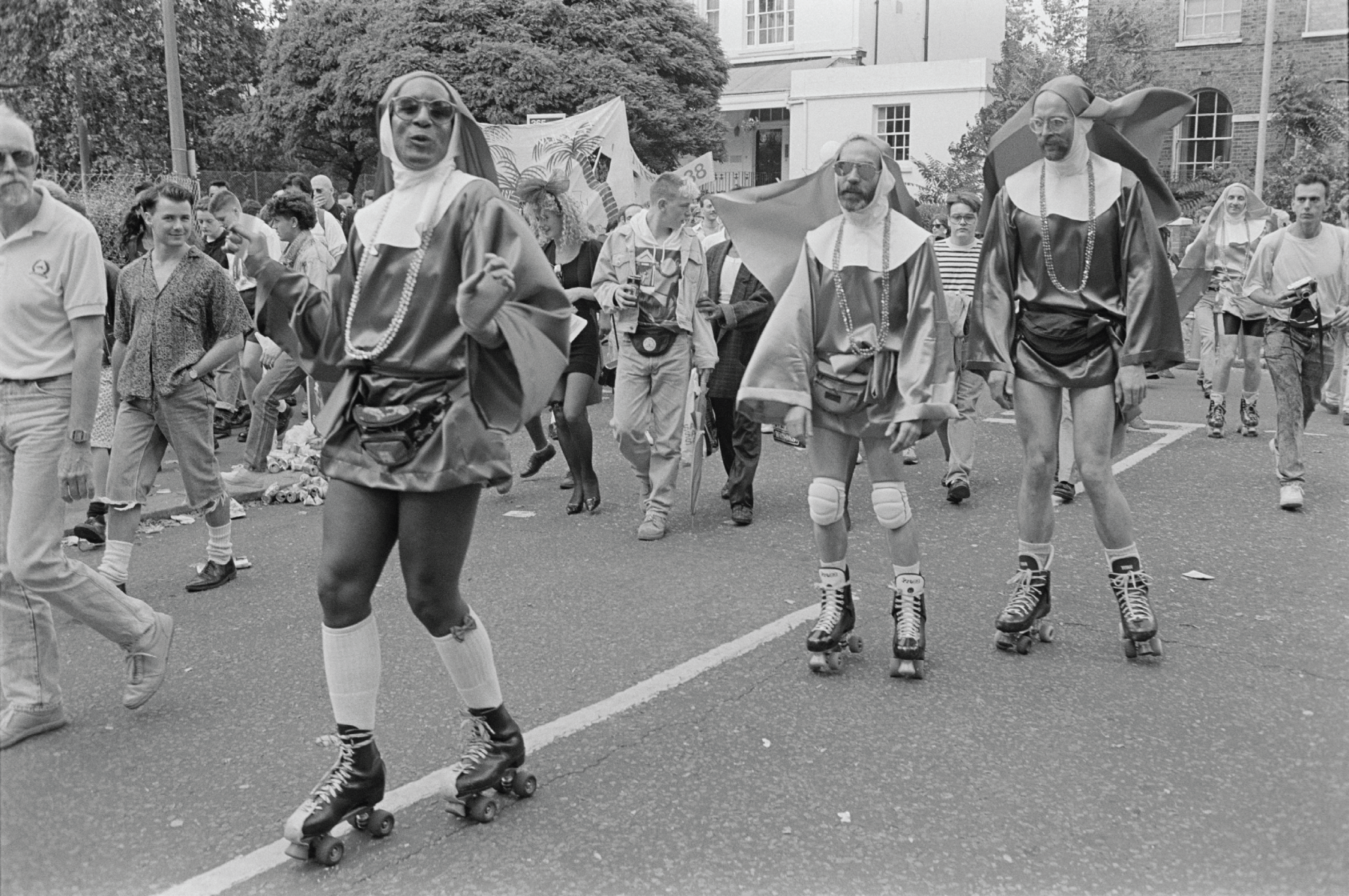
Untitled 5, From Come Out (1990/2024. Archival inkjet print, 24 x 36 inches | 7.5 x 11 inches, Edition of 5 + 1AP.)
Section 28 or Clause 28, introduced by Thatcher’s government in 1988, prohibited the “promotion of homosexuality” by local authorities and institutions, causing several support groups and informal organisations by LGBTQIA+ people to both shut down and self-censor. Advocates of gay rights, such as the publications Stonewall, OutRage!, Capital Gay, The Pink Paper and the Gay Times, formed the major opposition to Section 28 and championed its repeal. Although there were no successful prosecutions under the law, there were legal attempts to use it to stop the funding of LGBTQ and HIV/AIDS prevention initiatives. Thatcher’s regime also saw the persecution of several thousands of people from the community unlawfully charged with solicitation and prostitution, sowing exclusion and discrimination at the heart of British society.
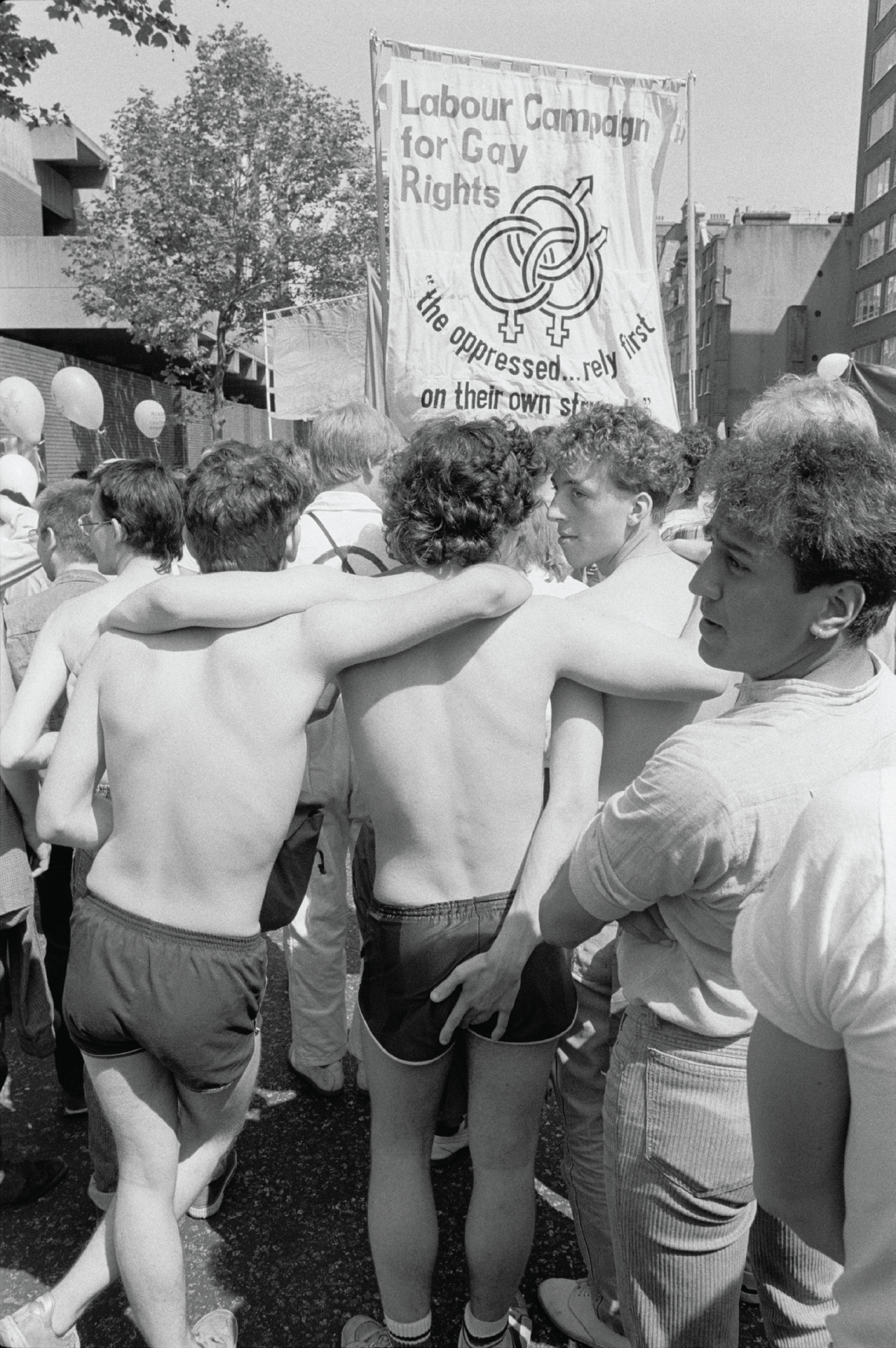
Untitled 3, From Come Out (1984/2024. Archival inkjet print, 36 x 24 inches | 11 x 7.5 inches , Edition of 5 + 1AP.)
On the second floor of the gallery, Come Out unfolds in the Viewing Room, generating an intimate space of encounter with the vastness and intensity of each photograph. Clustered across the walls, creating smaller linkages between themselves, the images dive deep into the textures of the public sphere in London in the ’80s and ’90s. The constellation of works present definitions and re-definitions highlighted by protesting bodies, debating the imaginations of the private made political. On the central wall holding seven photographs, a large-scale image of a protest is blown up as a backdrop to the others. A document of protest, pride, publicness and posterity, it assumes a dual functionality: as a silhouetted thematic, it is both unmissable and unretractable; as an evocation, it serves as an imposing and necessary reminder of this history of dissent and unity. An added texture to the space is the accompanying audio file playing testimonies of individuals from the Indian queer community, adapted from Gupta and Charan Singh’s project, Dissent and Desire (2018). This incorporates a filmic quality to the images, making their cumulative setting one that galvanises their subject further, urging viewers to pay close attention to how visibility can be catalysed.
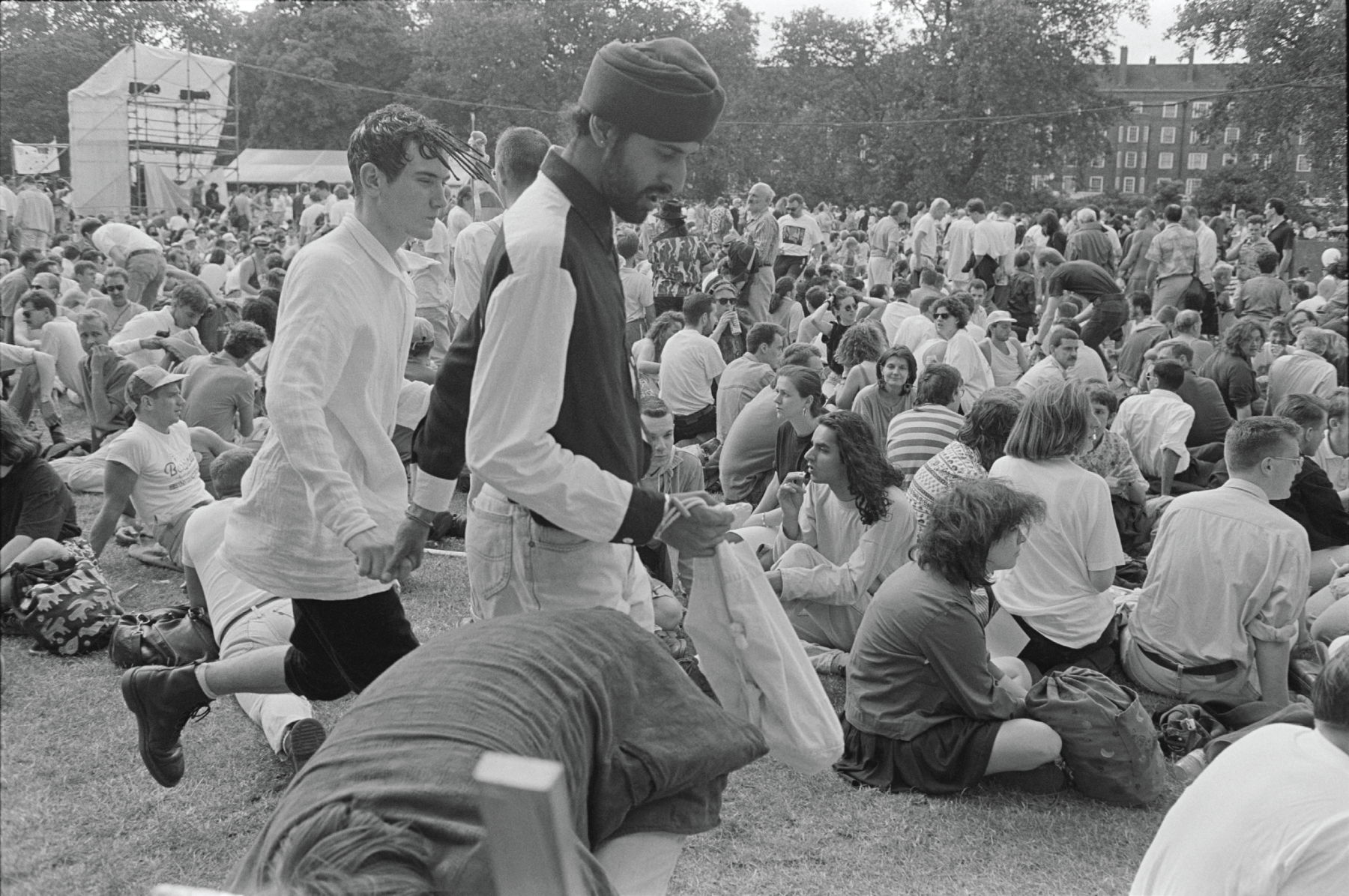
Untitled 7, From Come Out (1990/2024. Archival inkjet print, 24 x 36 inches | 7.5 x 11 inches, Edition of 5 + 1AP.)
The photographs trace a geography of metropolitan London, with iconic sites visible in the background—the National Gallery, Grosvenor House and Westminster Abbey, for instance—unmistakable and undeniably present as weighty symbols of access and privilege. These are juxtaposed against the people in the foreground who, despite their proximity to these emblematic landmarks, embody a marginalised existence and societal exclusion. With Gupta’s images, we are made privy to a critical framing of a body politic—of community—that shapes his own identity and belonging as well as his vision as an artist. As viewers, the images help us witness what it means to stake a claim—for one’s rights, for public space and towards personal freedom. We see multiple definitions of publicness emerge across these images, which have been taken with immense care, sensitivity, humour and seriousness.
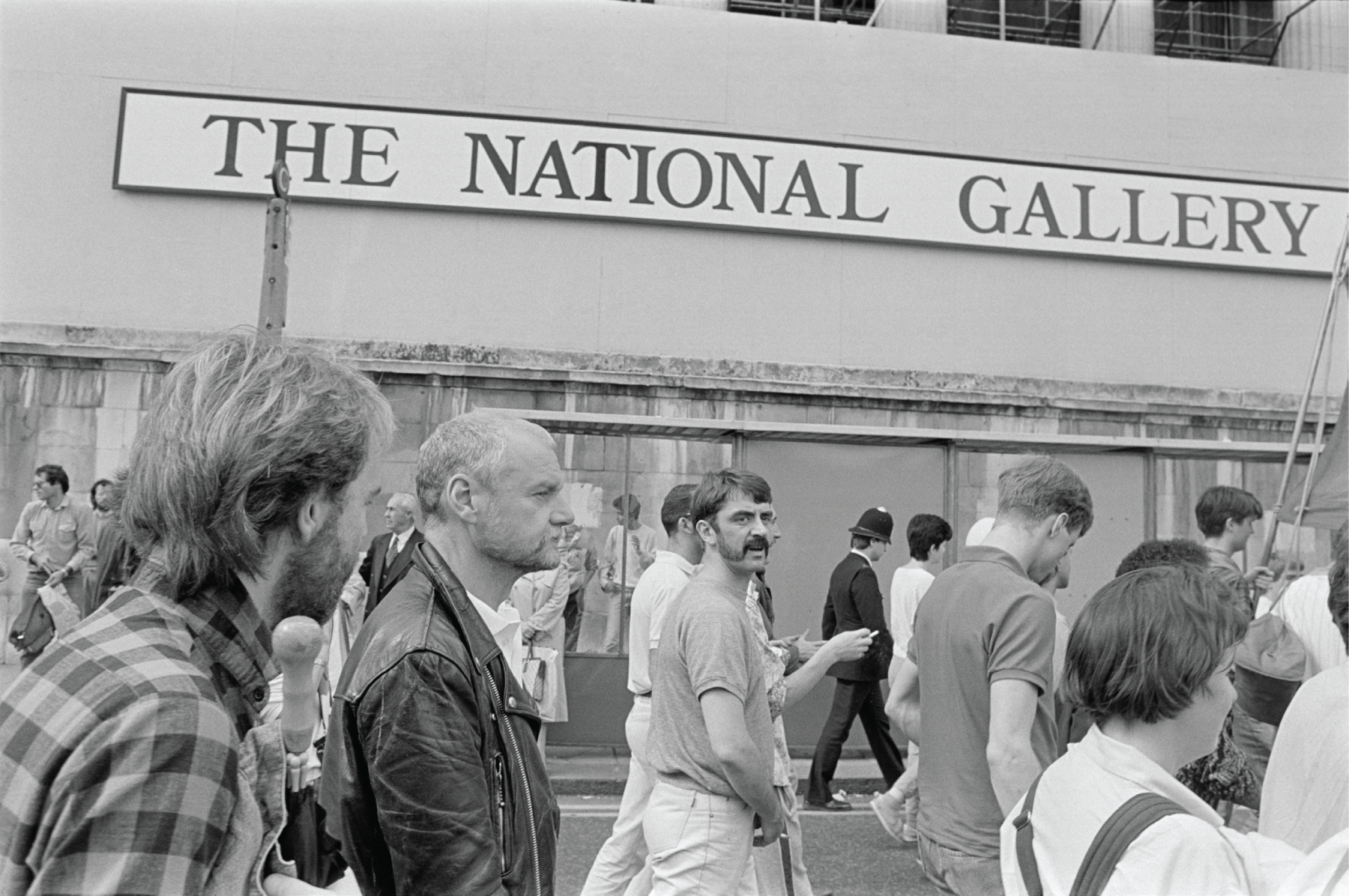
Untitled 18, From Come Out (1985/2024. Archival inkjet print, 24 x 36 inches | 7.5 x 11 inches, Edition of 5 + 1AP.)
The grammar of “coming out” extends beyond mere emergence. It tends towards the act of arriving at something, while indicating in a wide sweep an array of convergences that are necessary, political and urgent in their gestures of space-making. This arrival destabilises the need for a singular destination, claiming instead the entirety of a political and socio-cultural landscape. In Gupta’s hands, the camera is a connecting agent. It functions outside of a tool-led or technological determinism; it activates personhoods and people through his studies of subjectivity and social commentary. Across his different works—Christopher Street (1976), The New Pre-Raphaelites (2008) and Exiles (1986/2022)—Gupta’s image-making stands out for the exceptional way he renders the gestural and the embodied. In Come Out, we see the softness of bodies being held in contrast with the strength of ideas and feet being propelled into motion. We see the gentility of creasing arms and eyes, the viscousness of what it means to look and look back, opening up worlds unto themselves. In these visualisations of community and communal action, the embodied history of the self and self-making is brought to life. The gestural is also extended through attire and poise, and we see more than just the image of the collective—we see a haptic assembly take shape.
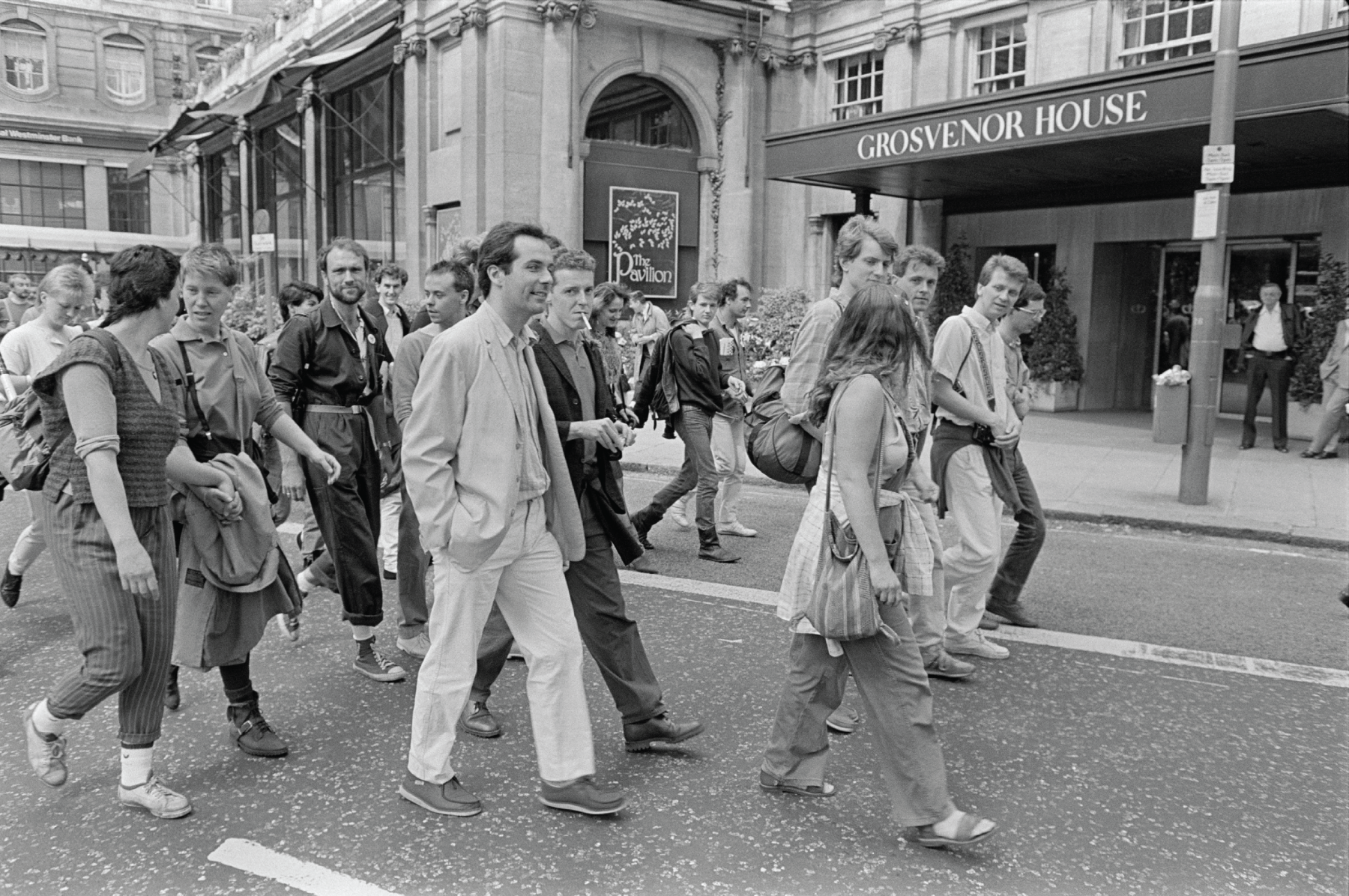
Untitled 20, From Come Out (1985/2024. Archival inkjet print, 24 x 36 inches | 7.5 x 11 inches, Edition of 5 + 1AP.)
The exhibited photographs are rich in detail, showcasing a diversity in race, gender, religion and other identities, making the display a methodological approach to unpacking the density of such histories. To attempt to read these images as individual photographs or as a series is to submit oneself to the multiple significations of portrayals and interplays that Gupta ushers in. These layers do not appear as mere citations but more excitingly as propositions for how photographs and photography might both unravel as media and mediated environments respectively, in the present moment of caustic genre-led binaries. Come Out presents a way of seeing that shifts the vantage point to the question of looking itself. As a photographer, Gupta is inimitable in his treatment of the everydayness of the subject of these photographs; he never forgets—even for a moment—the versatility that perpetuates gay existence. As a historian, he succeeds in crafting narratives that absorb and brim, repeatedly renewing their historicity, even today.
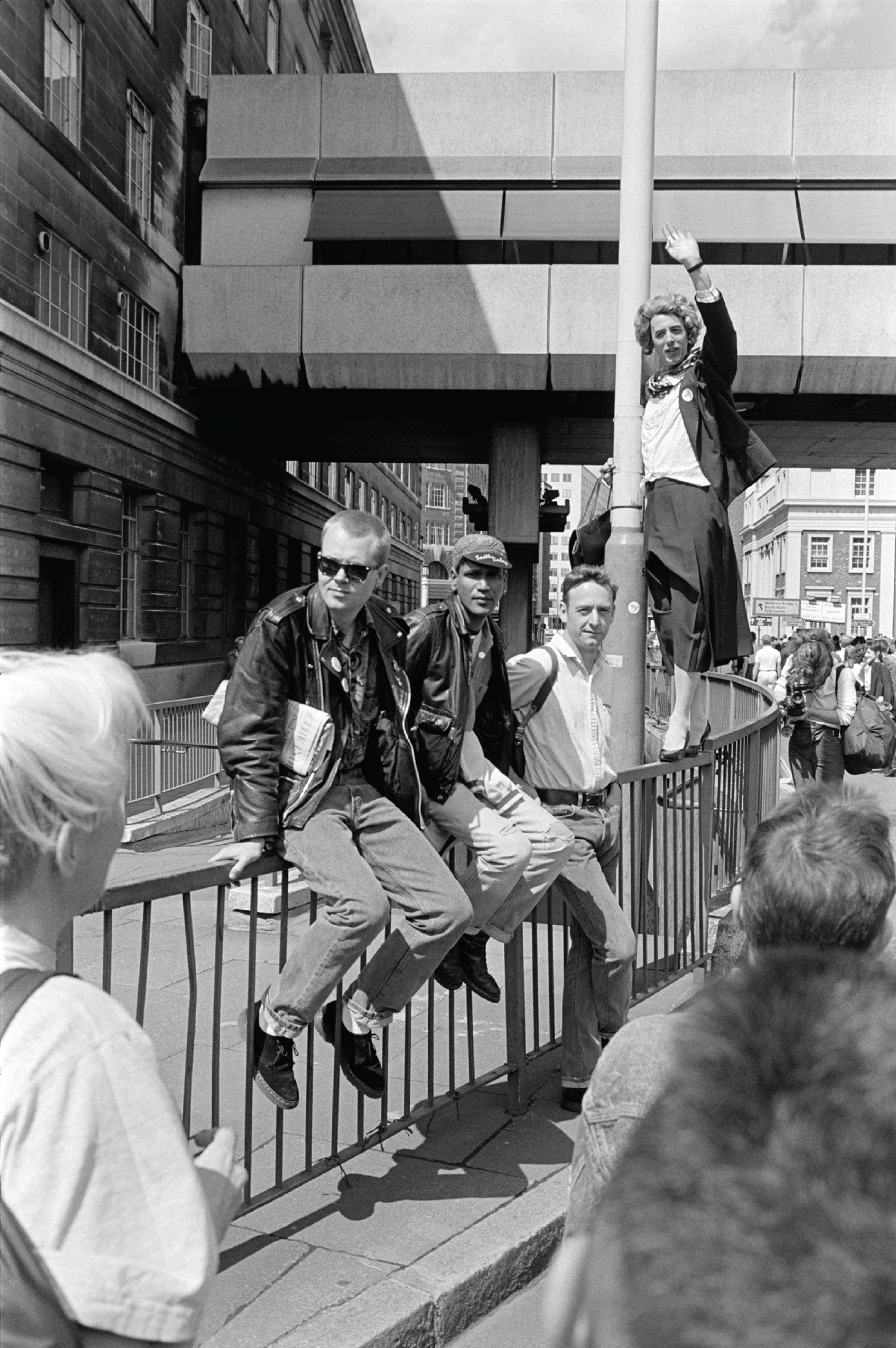
Untitled 11, From Come Out (1990/2024. Archival inkjet print, 24 x 36 inches | 11 x 7.5 inches, Edition of 5 + 1AP.)
To read more about events organised as part of the India Art Fair, read Mallika Visvanathan’s review of Anoli Perera’s Debris Collector and Shankar Tripathi’s reflection on Zahra Yazdani’s Scripted Selves: Sutures of Signs and Symbols.
Also read Parth Rahatekar’s sunset town rising love in our fiction section, which speaks to Sunil Gupta’s exhibition Cruising.
All images courtesy of Sunil Gupta and Vadehra Art Gallery.




